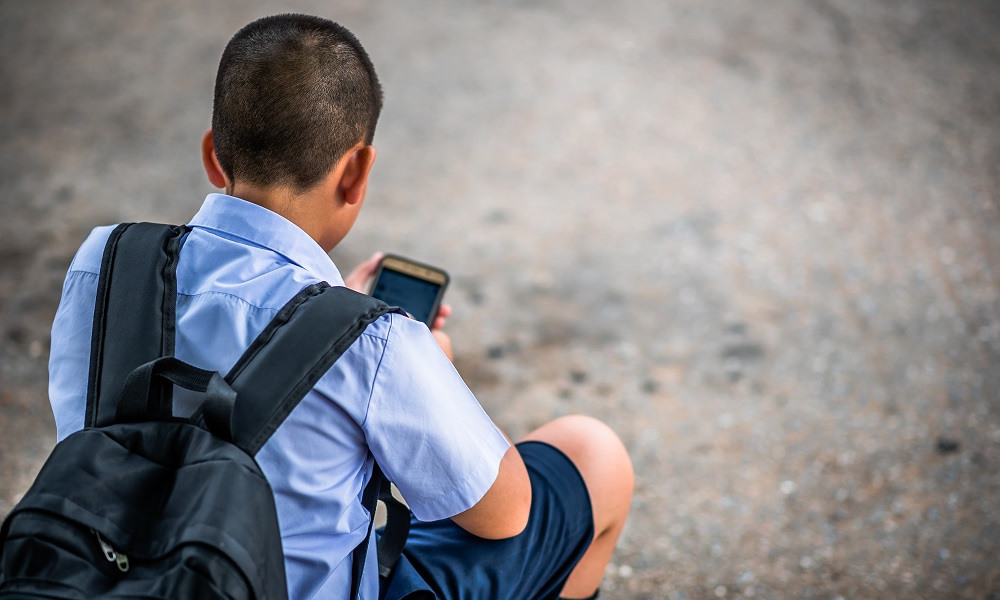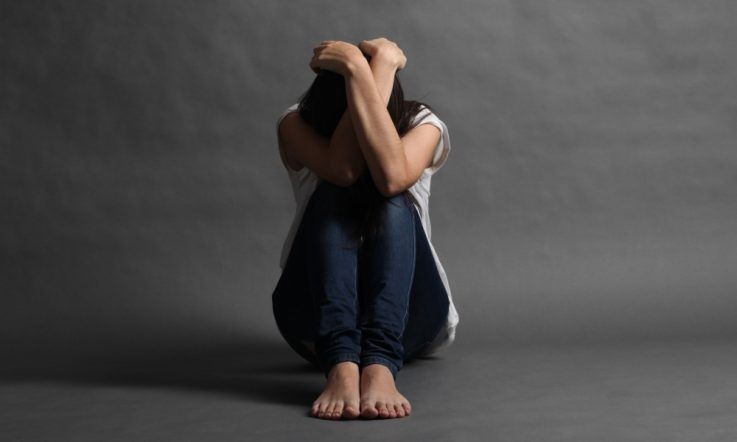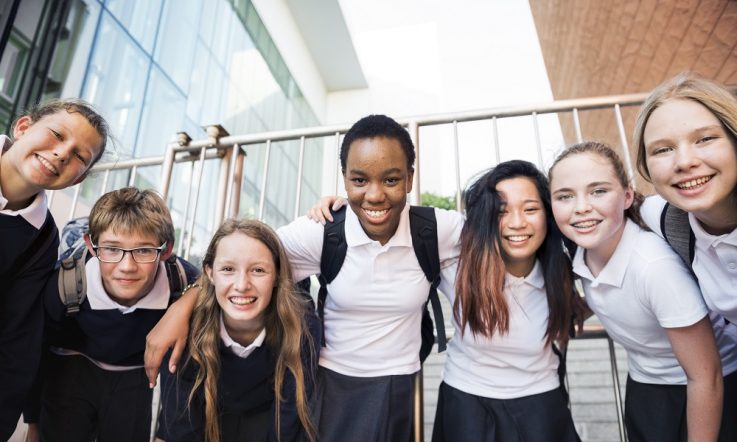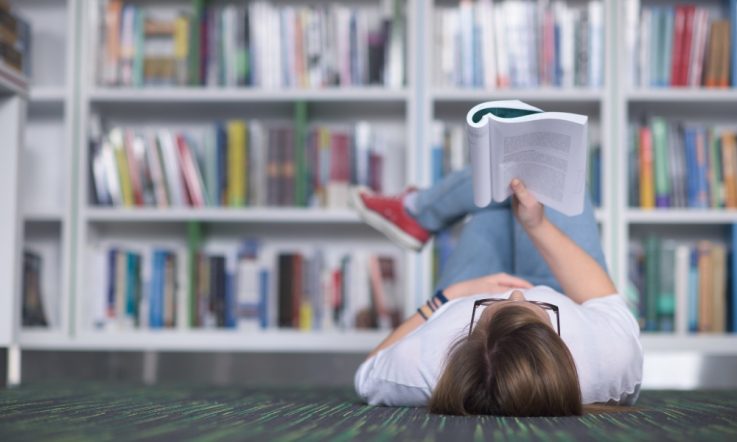Hello, thank you for downloading this podcast from Teacher magazine – I'm Dominique Russell.
In this episode of The Research Files, I'm joined on the line by Professor Helen Christensen, The Director and Chief Scientist at Black Dog Institute. Black Dog Institute is an Australian organisation focussed on identifying, preventing and treating mental illness. They're also pioneers in mental health research, and one research area is concerned with suicide prevention. This area is named CRESP, which stands for the Centre of Research Excellence in Suicide Prevention and brings together key researchers to focus on projects and trials with the aim of lowering suicide rates. Professor Christensen is currently leading a phase of CRESP research – which she labels CRESP 2 – that aims to deliver suicide prevention strategies across the country, taking a technology-based approach. Their work will include intervening at both primary and secondary school levels, with strategies centring on the use of different smartphone apps. I kick things off for this episode by asking Professor Christensen to explain how their research has led to implementing technology-based strategies en masse to schools.
Helen Christensen: We were lucky enough to get a research program that started around five or six years ago which essentially was looking at: what can we do to understand better who might be at risk of suicide and what sort of interventions could we use to change suicidal behaviour and thoughts? And at that stage we did some work around looking at Twitter to see if you can detect the signals through Twitter to … that maybe people who are at risk of suicide might show a differential kind of Twitter pattern or content. We also did research on looking at different interventions that could be delivered through mobile phones, and so on, online programs, to see if we could reduce risks of anxiety and depression which are major risk factors for suicide.
What that led to was the idea that really doing these smaller technology-based studies was probably not going to do it. Because essentially in order to get to everybody – you have to get really to everybody if you're going to be able to prevent suicide. That's because we don't know how to predict who is likely to take their own life or not. I mean we know there are risk factors like depression and anxiety, but in essence, very few people with depression do make a suicide attempt. So how do you pick those people? How do we know where to put resources? We realised that maybe you can't pick and what you have to do is go completely to scale. So our new CRESP Phase 2 is to use multiple targets in order to, in fact, kind of increase our coverage about offering either interventions or information around suicide.
To give you an example, clearly schools are a wonderful place in which to do any prevention that we know might work in suicide prevention, ideation or suicide attempts. And we know that a number of programs from overseas have been shown to be able to do this. And so our aim is to say: okay what are the programs that do reduce suicide ideation and suicide attempts? Let's get them into the schools. Similarly, we've seen many people will respond to, will go to see a GP [General Practitioner].You know, nearly 90 per cent of people go and see a GP within one year in Australia, but very few of those who have any anxiety or depression or any other sort of signs and risks, comorbidities (drinking, alcohol), they just don't tell their GP about it. And so GPs are not aware that they might be at risk. So what we want to do there is sort of universal screening where people are offered an app and they can list the types of symptoms that might be happening, and then that becomes – in real time, because the information is put through to the desktop of the GP – they can actually decide to have a conversation with that person if they see that there might be risks there.
Dominique Russell: So what does all this mean for the classroom teachers of the students involved in this initiative? Here, Professor Christensen explains the different roles teachers might have in the implementation of some of the suicide prevention strategies.
HC: Depends on the type of intervention that we're going to be doing. So in junior school, one of the interventions that we're looking at is the Good Behaviour Game which is a program that absolutely requires total delivery by teachers and it's basically a behavioural change program where young kids learn to kind of curb their impulsivity. So it improves the behaviour in the classroom but it also generates greater control within the kids themselves. So that's totally immersive and the teachers are totally involved in that. One of the things we want to do is to do it in younger kids. So, normally, it would be done in primary school, but we think it can be coming in at kind of kindergarten through to very early primary school. But the whole thing about it is that it's not just an hour here or an hour there, it's actually a coherent structure within the programs that the school teachers are doing with their kids anyway. So it's not an hour of this and then it stops; it's actually periods within the day in which the procedures are kind of put in to place. So it's much more integrated than that.
When we get to high school, some of our programs are much more around self-care by the students themselves. So the classroom becomes the opportunity to introduce the program and to do some measurement around it. Because basically one of the things we're determined to do is not do anything that isn't evidence-based. And by that what we mean is that it has to work, it has to reduce symptoms, it has to reduce suicide attempts and so on. So, yeah, there's a variety of roles that teachers will be playing, hopefully, in these programs.
DR: Another CRESP Phase 2 intervention strategy for schools is the Smooth Sailing App for students in secondary school. The app aims at improving the level of help-seeking among adolescents and CRESP co-designed this app with students, staff and parents. Here, Professor Christensen explains why it was important to consult these groups.
HC: Look, I think it's just so obvious that, you know, we as researchers don't know how schools work and what will work for the students and the teachers. I mean, we might have the theoretical background and some of the kind of knowledge about the psychological therapies that are required in order to change behaviour – I think that's where our expertise comes in to play. But how do you actually get that to work in a school environment when teachers are very busy? I think there was, you know, the concern from, say, the school counsellors; that if you're introducing a program that lets kids and school counsellors know that there might be a problem if you screen them for mental health problems – won't this increase the amount of work that people have to do? It'll be so overwhelming, and the kind of work that these people are doing already, teachers and the counsellors and so on, it's already absorbing, you know, 45 hours a week. So there's a lot of things that have to be overcome in designing something that's both effective for the kids that's also going to work in the school environment. So, I don't really think you can do it properly if you ever want anything to work in schools without having that co-design of how and where and in what form these interventions can be put into the school.
The way that it's actually been designed is that the parents provide consent for the kid to be involved in the Smooth Sailing program. The school heads have to agree, the teachers have to agree and the counsellors have to agree. ...And so the main idea for it is the kids to develop themselves to be more resilient. So that might be 80 per cent of kids, the other kind of goal of it is that there are kids who are very quiet who may not have come to attention to the school counsellor or to the head teacher or people in charge of looking after the wellbeing of kids because they're just so quiet. And so it's a way of alerting about who might be that kid.
On top of that, of course we need programs designed by teachers themselves about how to upskill around dealing with mental health in the classroom. So I'm not sure the extent to which there is still the view that, you know, this isn't something for the school environment. I think it's really changed now and I think most people recognise that mental health problems really interfere with the kids' capacity to do well academically. There's a new push within New South Wales Health, anyway, around a wellbeing culture. So all of these things are really kind of, if you like, contextual factors that are changing the nature of how kids are responded to within schools.
We know, for example, that 20 days a year are lost to school time if somebody experiences depression for 20 days less to attend school because of depression, is going to have an effect, usually on kids' academic performance.
DR: As we've mentioned, the entire CRESP 2 intervention is based around providing solutions for suicide prevention through the use of technology. I ask Helen why using technology is the most effective platform, particularly for schools.
HC: Well I don't think necessarily it is the most effective, and the technology has certain advantages, though, that don't normally happen normally if you don't have the systems in place. So technology creates systems to remind people to do things, to cue up kids about it's time to do your next bit of a program, to check-in with them. Because it's all pre-programmed, so you actually get this sort of continuity of contact with the kids which is really hard unless you've got someone there with this kind of huge spreadsheet kind of checking this off. And it's sort of, this is where machines are good, they actually help us to keep systems going. The other reason is scale, so even though we have a wonderful cohort of school counsellors, they can't be there 24/7, not all schools have them, and there's different responses that people take to when kids are in crisis or do have mental health problems. So it's a way of providing a bit more of a safety net.
And the final thing is the scale. You know, you can do a lot with technology that you simply can't with our current workforce. So, we can reach everybody. Everyone has a mobile phone now (or almost everybody). So it's scale, it's timeliness, it's 24/7 and it's also – I guess another thing is – it has fidelity. So when you do develop a good program, that program is capable of being delivered without any kind of change to it. So what you do find is a lot of programs, people will modify them because it just becomes easier to do it a particular way. But in these programs, we think fidelity is really important in making people go through a number of different exercises. So, again, the IT makes that happen.
DR: Finally, Helen explains what the Centre for Research Excellence in Suicide Prevention's next steps are after this phase of research.
HC: There's so much we're doing in CRESP 2, it's beyond schools and that haven't had a chance to do. What we actually think would be a good thing to establish is a kind of centre for excellence in school-based mental health. So that, say, an organisation like Black Dog can provide well-regarded and evidence-based programs that exist for school-based mental health. And that we can work with schools, teachers, counsellors, parents and others to modify them so that they can actually fit into the school environment. And that we can also be part of setting up training programs around how to implement them. Because I think that's actually a bit of a gap at the moment. It's very hard at the individual kid level to know what programs to give to children at what particular time for what particular outcomes. And while we have Mind Matters and other school-based programs that set up the setting and the right environment for schools to be able to deliver programs, we still don't have that focus on every individual child. What do they need? What really will make a difference? Because in terms of suicide ideation and suicide attempts, we know there are only a small number of specific programs and that knowledge about what those are and how they could potentially work in our schools is something that's really hard to find.
That's all for this episode. If you or anyone you know needs help, call Lifeline on 13 11 14 or the Kids Helpline on 1800 551 800. To keep listening or to download all of our podcasts for free, whether it's from our series on Behaviour Management, Global Education, School Improvement, Teaching Methods, Action Research or The Research Files, just visit acer.ac/teacheritunes or soundcloud.com/teacher-ACER. The full transcript of this podcast is available at teachermagazine.com.au. That's where you'll also find all the latest articles, videos and infographics for free.



